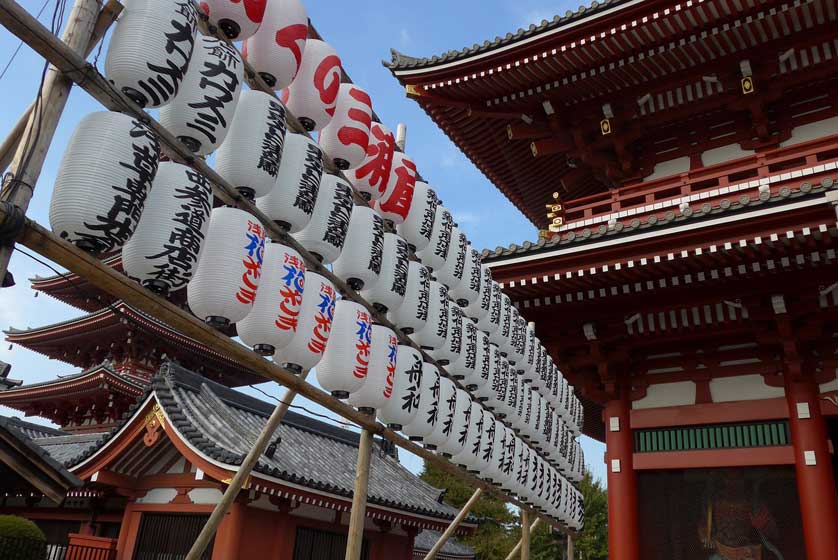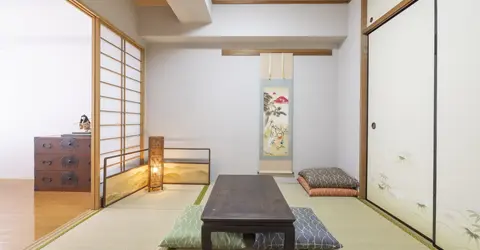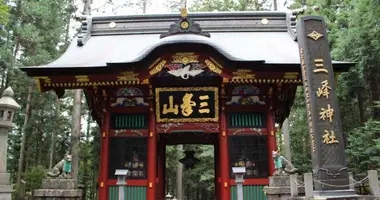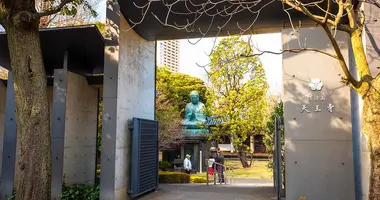Sensō-ji: Tokyo's oldest and most significant Buddhist temple
History and legend of Sensō-ji
According to legend, a statue of Kannon was found in the Sumida River in 628 AD by two fishermen, brothers Hinokuma Hamanari and Hinokuma Takenari. The chief of their village, Hajino Nakamoto, recognized the sanctity of the statue and enshrined it by remodeling his own house into a small temple in 645 AD, making it the oldest-established temple in Tokyo. The temple was destroyed during World War II but was rebuilt as a symbol of rebirth and peace.
Temple grounds and structures
Kaminarimon or "Thunder Gate" dominates the entrance with its massive red lantern. Nakamise-dori, a street lined with traditional shops, leads to the Hōzōmon or "Treasure House Gate". The main hall is devoted to Kannon, and a five-story pagoda stands within the precincts. The temple also features a quiet contemplative Japanese style garden.

Kaminarimon - the iconic entrance gate
The outer gate leading to Sensō-ji, housing statues of Shinto gods Fūjin and Raijin. The original gate was built in 941 AD, with the current structure dating back to 1960. A giant red lantern hangs under the center of the gate, weighing approximately 700 kilograms.
Hōzōmon - the inner gate and treasure house
The inner gate leading to Sensō-ji, housing two guardian statues of Niō. The second story of the gate stores the temple's treasured sutras. The gate features a large red lantern and two tall copper tōrō lanterns on either side.
Nakamise-dōri - the temple's traditional shopping street
A 250-meter long street lined with around 89 shops on the approach to the temple. Shops sell traditional goods, souvenirs, and local snacks to pilgrims and tourists. The street has a history dating back to the early 18th century.
Festivals and cultural significance
Sensō-ji is the focus of Tokyo's largest and most popular festival, Sanja Matsuri. Many tourists, both Japanese and international, visit the temple every year. The surrounding area is filled with traditional shops and restaurants, making it a cultural hub in the heart of Tokyo.
Sensō-ji is an ancient Buddhist temple located in Asakusa, Tokyo, Japan. It is Tokyo's oldest-established temple, dedicated to Kannon, the bodhisattva of compassion. The temple complex includes the main hall, a five-story pagoda, and large gates. Sensō-ji is the most widely visited religious site in the world with over 30 million visitors annually, making it a must-see destination for tourists and pilgrims alike.





























